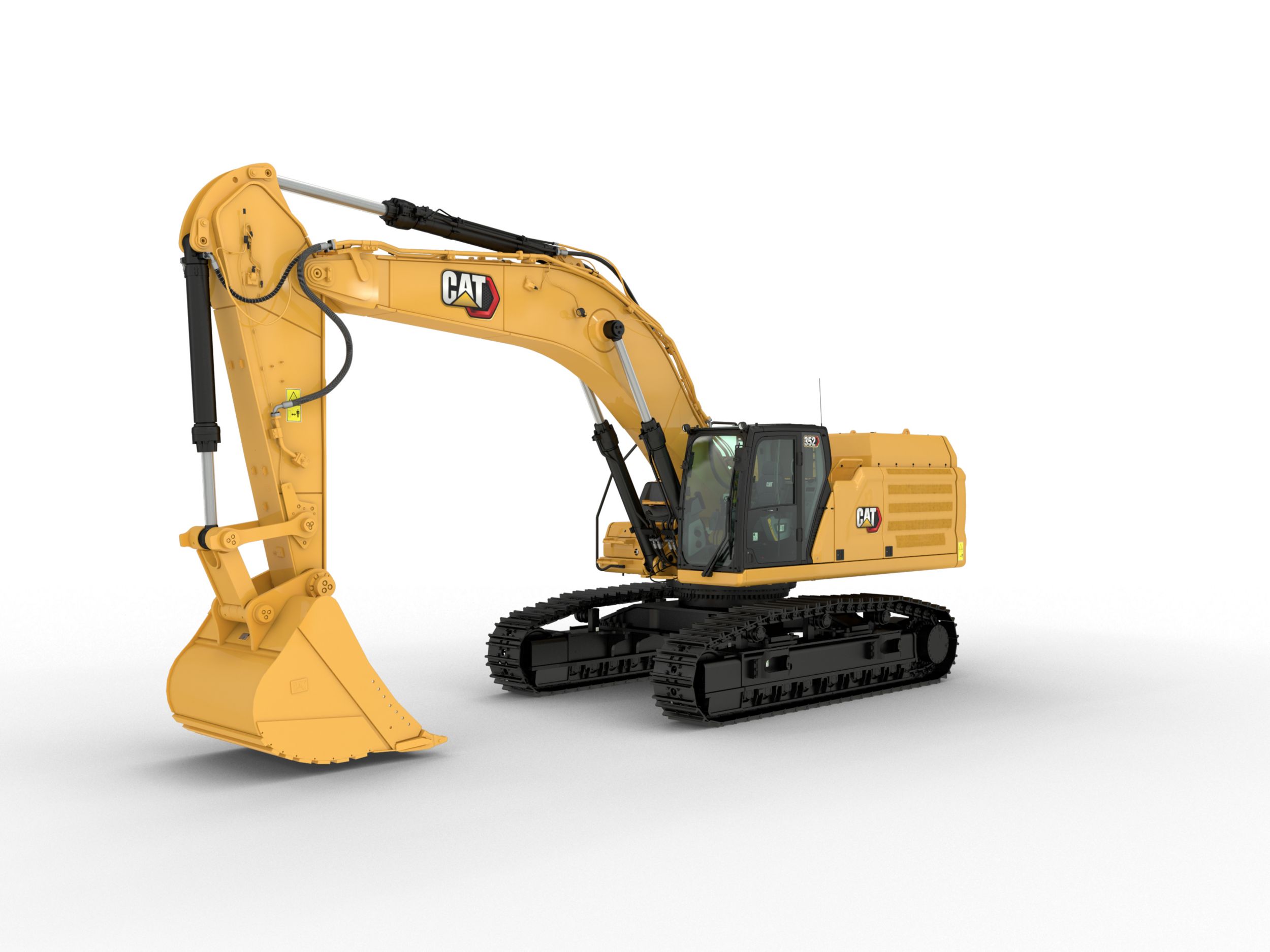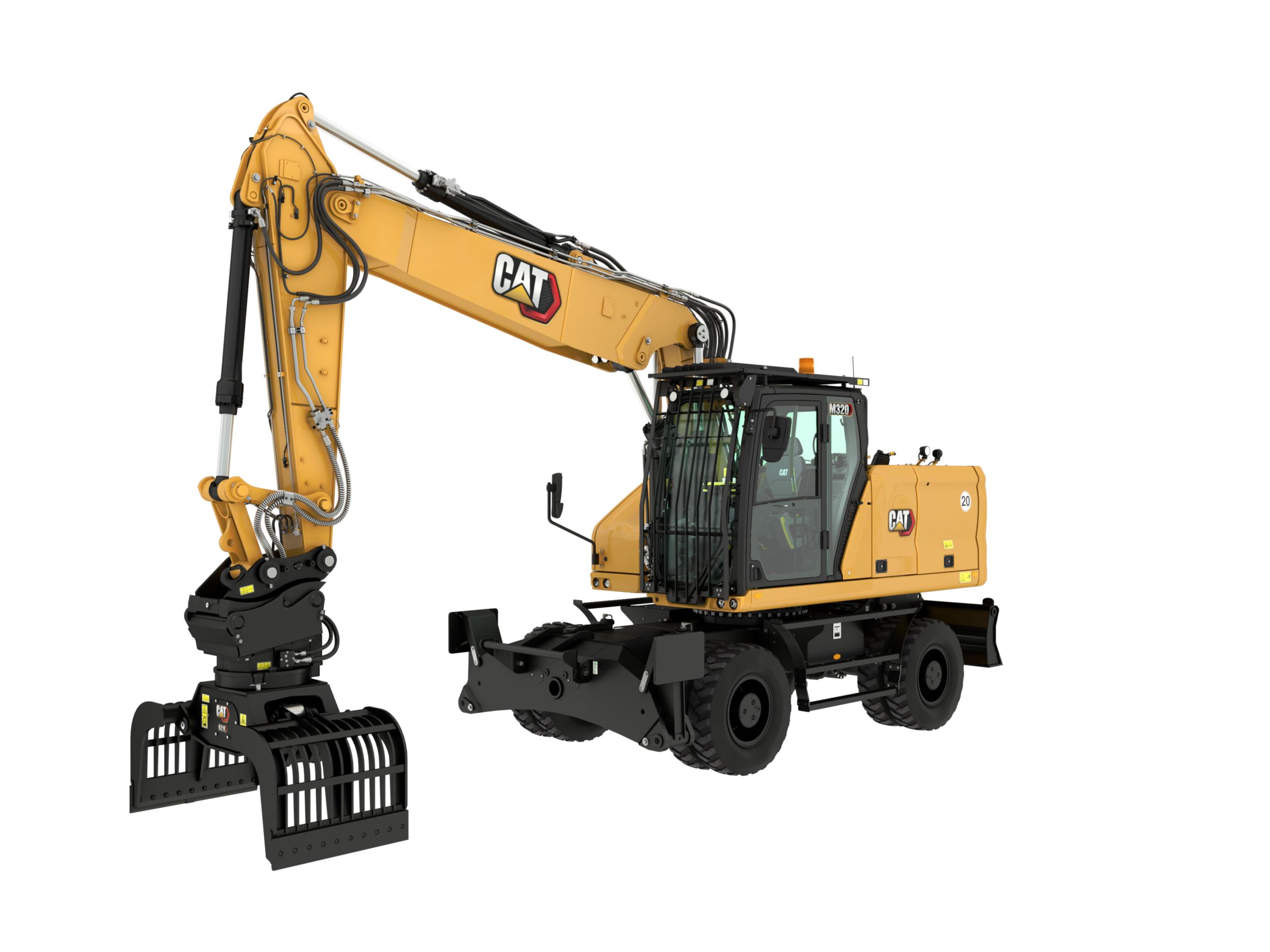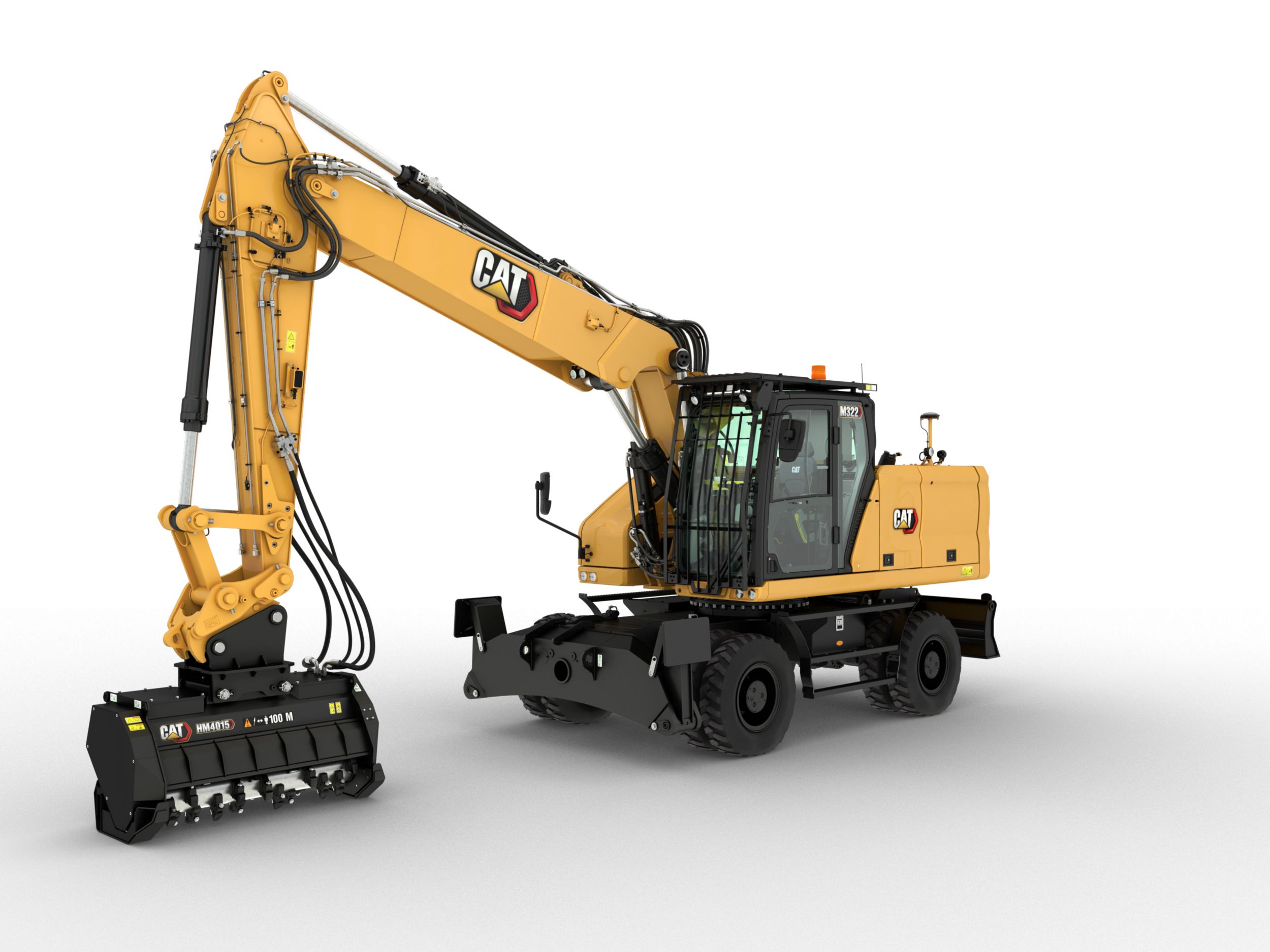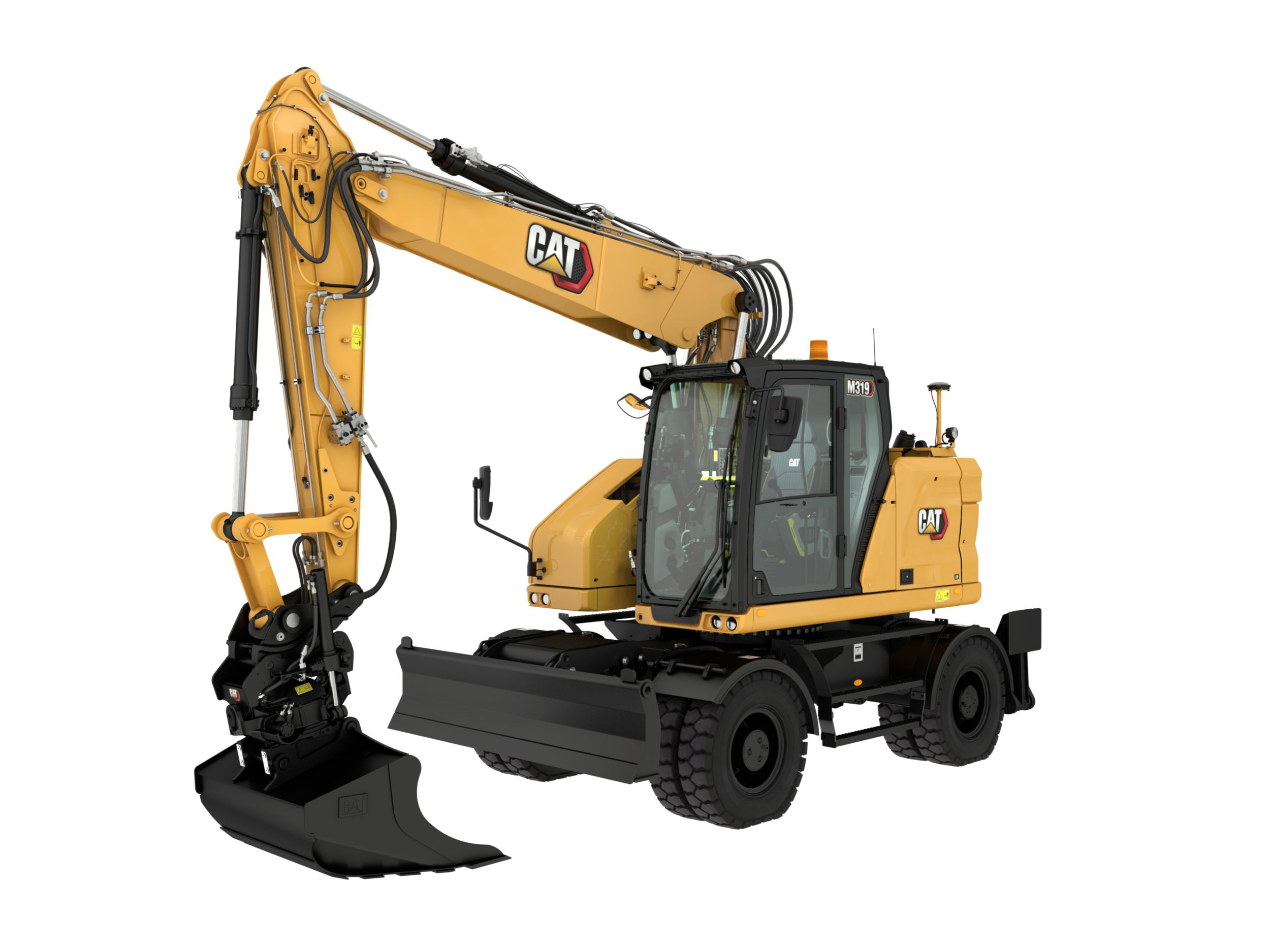300.9D
Operating Weight - Without Safety Frame 2061
lb | |
Digging Force - Bucket 2000
lb | |
Digging Force - Stick 1011
lb | |
| View Details | |
Caterpillar serves all regions of the world so we build many different configurations of hydraulic excavators. Your Cat® dealer has exact machine specifications available in your area to help you choose what will best meet your needs.
Operating Weight - Without Safety Frame 2061
lb | |
Digging Force - Bucket 2000
lb | |
Digging Force - Stick 1011
lb | |
| View Details | |
Net Power 23.6
hp | |
Engine Model C1.1 Turbo | |
Net Power - 2,400 rpm - ISO 9249, 80/1269/EEC 23.6
hp | |
| View Details | |
Net Power 45
hp | |
Engine Model C1.7 Turbo | |
Gross Power - 2,400 rpm - SAE J1995:2014 48.4
hp | |
| View Details | |
Net Power 54.8
hp | |
Displacement 148
in³ | |
Gross Power - SAE J1995:2014 57.9
hp | |
| View Details | |
Net Power 69.5
hp | |
Displacement 203
in³ | |
Net Power - 2,200 rpm - ISO 9249:2007, 80/1269/EEC 69.5
hp | |
| View Details | |
Net Power 69.5
hp | |
Displacement 203
in³ | |
Note Net power advertised is the power available at the flywheel when the engine is equipped with air cleaner, exhaust system and fan. | |
| View Details | |
Net Power 69.5
hp | |
Note The 309 CR specifications are based on a machine configured with a Long (L) Undercarriage. | |
Operating Weight 21091
lb | |
| View Details | |
Note The 309 CR VAB specifications are based on a machine configured with a Long (L) Undercarriage. For specifications representing a 309 CR VAB with a Standard Undercarriage, please refer to the 308 CR information. | |
Net Power 69.5
hp | |
Displacement 203
in³ | |
| View Details | |
Net Power 69.5
hp | |
Stroke 4.7
in | |
Note Net power advertised is the power available at the flywheel when the engine is equipped with air cleaner, exhaust system and fan. | |
| View Details | |
Net Power - ISO 9249 73
hp | |
Engine Model Cat C3.6 | |
Engine Power - ISO 14396 74
hp | |
| View Details | |
Net Power - ISO 9249 108
hp | |
Net Power - ISO 9249 (DIN) 110
hp (metric) | |
Engine Model Cat C3.6 | |
| View Details | |
Net Power - ISO 9249 108
hp | |
Net Power - ISO 9249 (DIN) 110
hp (metric) | |
Engine Model Cat C3.6 | |
| View Details | |
Net Power - ISO 9249 119
hp | |
Engine Model Cat C3.6 | |
Engine Power - ISO 14396 121
hp | |
| View Details | |
Net Power - ISO 9249 133
hp | |
Net Power - ISO 9249 (DIN) 134
hp (metric) | |
Engine Model Cat C3.6 | |
| View Details | |
Net Power - ISO 9249 172
hp | |
Net Power - ISO 9249 (DIN) 175
hp (metric) | |
Engine Model Cat® C4.4 | |
| View Details | |
Net Power - ISO 9249 146
hp | |
Net Power - ISO 9249 (DIN) 148
hp (metric) | |
Engine Model Cat® C4.4 | |
| View Details | |
Net Power - ISO 9249 172
hp | |
Net Power - ISO 9249 (DIN) 175
hp (metric) | |
Engine Model Cat® C7.1 | |
| View Details | |
Net Power - ISO 9249 172
hp | |
Net Power - ISO 9249 (DIN) 175
hp (metric) | |
Engine Model Cat® C4.4 | |
| View Details | |
Net Power - ISO 9249 201
hp | |
Net Power - ISO 9249 (DIN) 204
hp (metric) | |
Engine Model Cat® C7.1 | |
| View Details | |
Net Power - ISO 9249 273
hp | |
Net Power - ISO 9249 (DIN) 277
hp (metric) | |
Engine Model Cat® C7.1 | |
| View Details | |
Net Power - ISO 9249 201
hp | |
Net Power - ISO 9249 (DIN) 204
hp (metric) | |
Engine Model Cat® C7.1 | |
| View Details | |
Net Power - ISO 9249 273
hp | |
Net Power - ISO 9249 (DIN) 277
hp (metric) | |
Engine Model Cat® C7.1 | |
| View Details | |
Net Power - ISO 9249 300
hp | |
Net Power - ISO 9249 (DIN) 304
hp (metric) | |
Engine Model Cat C7.1 TTA | |
| View Details | |
Net Power - ISO 9249 346
hp | |
Net Power - ISO 9249 (DIN) 351
hp (metric) | |
Engine Model Cat C9.3B | |
| View Details | |
Net Power - ISO 9249 413
hp | |
Net Power - ISO 9249 (DIN) 419
hp (metric) | |
Engine Model C9.3 B | |
| View Details | |

Net Power - ISO 9249 443
hp | |
Net Power - ISO 9249 (DIN) 449
hp (metric) | |
Engine Model Cat C13B | |
| View Details | |
Net Power - ISO 9249 484
hp | |
Net Power - ISO 9249 (DIN) 491
hp (metric) | |
Engine Model Cat C15 | |
| View Details | |
Net Power - ISO 9249 542
hp | |
Net Power - ISO 9249 (DIN) 550
hp (metric) | |
Engine Model Cat C18 | |
| View Details | |
Engine Model Cat C7.1 | |
Net Power - ISO 9249 273
hp | |
Net Power - ISO 9249 (DIN) 277
hp (metric) | |
| View Details | |
Engine Model C9.3B | |
Net Power - ISO 9249 346
hp | |
Net Power - ISO 9249 (DIN) 351
hp (metric) | |
| View Details | |
Engine Model Cat C9.3B | |
Net Power - ISO 9249 346
hp | |
Engine Power - ISO 14396 (DIN) 352
hp (metric) | |
| View Details | |
Engine Model Cat C13B | |
Net Power - ISO 9249 443
hp | |
Net Power - ISO 9249 (DIN) 449
hp (metric) | |
| View Details | |
Engine Model Cat C13B | |
Net Power - ISO 9249 443
hp | |
Net Power - ISO 9249 (DIN) 448.7
hp (metric) | |
| View Details | |
Engine Power - ISO 14396:2002 148
hp | |
Engine Power - ISO 14396 (DIN) 150
hp (metric) | |
Engine Model C4.4 | |
| View Details | |
Engine Power - ISO 14396:2002 174
hp | |
Engine Power - ISO 14396 (DIN) 176
hp (metric) | |
Engine Model C4.4 | |
| View Details | |

Engine Power - ISO 14396:2002 174
hp | |
Engine Power - ISO 14396 (DIN) 176
hp (metric) | |
Engine Model C4.4 | |
| View Details | |

Engine Power - ISO 14396:2002 174
hp | |
Engine Power - ISO 14396 (DIN) 176
hp (metric) | |
Engine Model C 7.1 | |
| View Details | |
Engine Power - ISO 14396 134
hp | |
Engine Power - ISO 14396 (DIN) 136
hp (metric) | |
Engine Model Cat® C3.6 | |
| View Details | |

Engine Power - ISO 14396 174
hp | |
Engine Power - ISO 14396 (DIN) 176
hp (metric) | |
Engine Model Cat® C4.4 | |
| View Details | |
Engine Power - ISO 14396 148
hp | |
Engine Power - ISO 14396 (DIN) 150
hp (metric) | |
Engine Model Cat® C4.4 | |
| View Details | |
Engine Power - ISO 14396 148
hp | |
Engine Power - ISO 14396 (DIN) 150
hp (metric) | |
Engine Model Cat® C4.4 | |
| View Details | |
Excavators come in different sizes and configurations to suit specific needs, such as mini excavators for tight spaces, small excavators for minor demolition, large excavators for heavy tasks such as waste and transfer stations, long-reach excavators for deep excavations, and demolition excavators for tearing down large structures.
The majority of excavators are equipped with tracks, which is why they can often be referred to as tracked excavators, although there are also some that operate on just wheels. When choosing the right excavator, factors like the project size, materials, site conditions, and budget must be considered (excavators are not to be confused with material handlers which are primarily used to pick up, carry and swing materials).
Excavators are comprised of several key components, including the boom, stick, and dipper for digging and material handling, a hydraulic system for powering and controlling these components, tracks or wheels for mobility, an operator's cab with controls, an engine for power, a counterweight for stability, and an undercarriage to support the tracks or wheels.
The operator uses the control system in the cab to manipulate the excavator's movements, enabling it to perform various tasks such as digging, lifting, and swinging the arm. The specific design and features of an excavator can vary depending on the size and service it provides. Finning offers a range of new and used Cat excavator models, ensuring that professionals in these industries can find the right equipment for their specific needs, enhancing project efficiency and success.
Different models of Cat excavators offered by Finning have varying operating weights, net power and dig depth. Some Cat excavators also come in an electric specification delivering zero emissions and low noise, whilst also delivering the power output you’d expect. It’s important to know the operating weight you desire before making a purchase as it will vary depending on the job you’re completing. Net power is a critical specification for excavators and other heavy machinery, as it directly impacts the performance, efficiency, and versatility of the equipment. Dig depth is crucial for efficient, safe, and budget-friendly excavation.
Choosing the right excavator depth is essential for successful construction and excavation projects. Opting for an excavator with the right operating weight, net power and dig depth is
imperative to attain successful and economically sound outcomes in construction and excavation endeavours.
Cat excavators are widely recognised for their outstanding performance, unmatched versatility, and exceptional fuel efficiency, establishing benchmarks within the industry. Operators benefit from their easy-to-use interface, impressive durability, and advanced safety and technology attributes, including multi-view 360-degree cameras, automatic climate control, and increased legroom, enabling them to excel in a diverse range of tasks whilst also providing excellent comfort, safety and efficiency. These rugged machines are built to withstand the toughest working conditions, ensuring long-lasting value for your business and lower costs in the long run. Prioritising safety throughout our excavator production is paramount, as evidenced by the incorporation of cutting-edge safety measures like the 2D E-fence and state-of-the-art people detection systems. This advanced technology not only reinforces safety but also elevates overall performance and efficiency.
Cat excavators from Finning stand at the forefront of the market in promoting sustainability. In addition to their electric-powered excavator models, certain excavators within the lineup are capable of running on eco-friendly biofuels like HVO. Cat maintains a steadfast commitment to enhancing efficiency across their products and services, contributing to the pursuit of a lower-carbon future and an improved quality of life for all.
So, to choose the right excavator for the job, begin with assessing the specific excavation requirements, considering the type of material, site conditions, and environmental factors, and evaluating factors like machine size, reach, attachments, and operating costs. It's essential to select a machine that fits within your budget and is reliable, with consideration of the manufacturer and model. Seeking expert advice from Finning and testing different options can help ensure you make an informed decision, resulting in efficient and cost-effective excavation work tailored to your project's needs.
For more information regarding excavators in the UK and Ireland, reach out to Finning directly today. You can discuss our extensive range of high-quality excavators and consult with our team of experts if you're uncertain about which excavator best suits your needs.